Updated: October 14th, 2022
This article contains affiliate links. Read the full disclosure here.
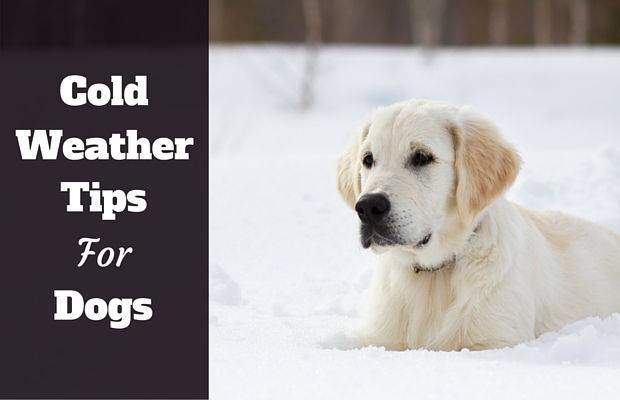
Photo Credit: © Depositphotos.com / bakharev
Winter. Whether you love it or hate it, there’s a good chance your golden retriever enjoys every minute of it. With their long coats and bouncy personalities, golden retrievers tend to embrace the cold like they embrace life, thoroughly and joyfully.
Despite the tail wagging it invokes, winter can bring chilly temperatures, salty roads and sidewalks, and snowy conditions that make walking difficult.
Your dog may not mind the inconvenience, but there are a few steps you can take to make winter more enjoyable for you and your canine companion.
Tips for Keeping Your Dog Safe and Healthy in a Cold Winter
If you live in an area that is susceptible to cold temperatures and snowy conditions in the winter, there are a few health and safety concerns you should be aware of.
Here’s what you need to know about keeping your dog safe and healthy all winter long.
- Clean the salt and chemicals off your dog. If your dogs play or walk outside during wet and snowy winter conditions, be sure to give them a thorough rub-down with a clean towel before they come inside. Dogs can easily ingest antifreeze, salt, and other chemicals by licking it off of their feet and legs. Salt and chemicals will also irritate their skin if left alone for too long.
- Never leave your dog outside alone. If your dog is going to play outside in freezing temperatures, you should always be nearby to monitor his condition and bring him inside when he gets too cold.
- Never have your dog shaved down in the winter. Your golden retriever’s long fur helps keep him warm in freezing temperatures.
- If you bathe your dog in the winter, be sure he is completely dry before going outside. You can also skip baths altogether in the winter, unless your dog has fleas or has rolled in something stinky.
- Don’t leave your dog alone in the car during the winter. A car acts just like a refrigerator in cold temperatures, and before long, your car will actually be colder than the air outside, causing your dog to freeze to death.
- Pay special attention to puppies and older dogs. They may not tolerate to cold as well and should be carefully monitored. It may also be difficult to house-train a puppy during the winter months. Instead, consider paper-training until nicer weather sets in.
- If your dogs are active, increase their food intake. Active dogs who spend a lot of time outdoors will burn a lot of calories. Providing extra, high quality dog food will help them perform their best while staying in tip-top condition.
- Clean up antifreeze spills immediately. This lethal poison should be cleaned up immediately in the event of a spill. Instead of the highly toxic ethylene glycol, consider using a product with propylene glycol instead. For more information about the toxic effects of antifreeze, read ASPCA.
- Make sure your dog has a warm place to sleep. A cozy dog bed is a perfect spot for a snooze, just be sure to keep it away from drafts. Keep your house temperature up and be sure to thoroughly protect your pets to prevent overnight chills.
Walking and Exercising Your Dog in Winter
Your dog will benefit from exercise every single day, even in the winter. But what do you do when the the frosty temps and snow-covered roads make you want to stay in bed?
Here are some great tips to help you brave the winter weather with your dog.
Teach Your Dog to Wear Booties
Snow, salt, and ice can wreak havoc on your dog’s pads, making them cold and sore. These Ruffwear Dog Boots will protect your pup’s feet so they can walk and run in all kinds of weather.
Most dogs will balk at wearing boots, but if you practice in the house for a few days, they should get the hang of it pretty quickly and will appreciate being able to get back outside!
Teach Your Pooch to Walk by Your Side
A dog who pulls you around the neighborhood is annoying at the best of times, but in the winter the scenario can become dangerous due to a much greater risk of you falling over on slippery snow and ice.
It’s best to work on loose-leash walking when the weather is still pleasant, so that your dog is a pro when winter does hit.
To get started, read Leash Training for No More Pulling!
Keep Your Dog on a Leash and Make Sure They Wear Tags
More dogs are lost during the winter than any other time, especially during periods of heavy snow when dogs can easily lose track of scents.
It might be best to keep your dog on the leash and if you do let them off, make sure your dog’s tags are up to date with your current contact information, just in case.
Buy Your Dog a Sweater
A sweater or coat can be a great way to help your dog’s body stay warm during frosty winter walks.
Most golden retrievers have long, thick fur that offers ample protection, but young pups and older dogs may need that extra layer of insulation and the warmth it retains. Our friends at Frisco have come up with their picks for the best dog coats/jackets available this winter.
Schedule a Puppy Play Date
If it’s really cold, your dog may just need to burn off some steam with friends as physical exercise warms the body. This will also likely be more enjoyable than a slow slog through the snow and ice on the streets on leash.
Ask dog friends (and their owners) to meet you at the local dog park, or if you’ve got a fenced-in-yard, host a dog party. Winter will be a lot shorter when you’ve got friends to play with.
Signs that Your Dog is Too Cold
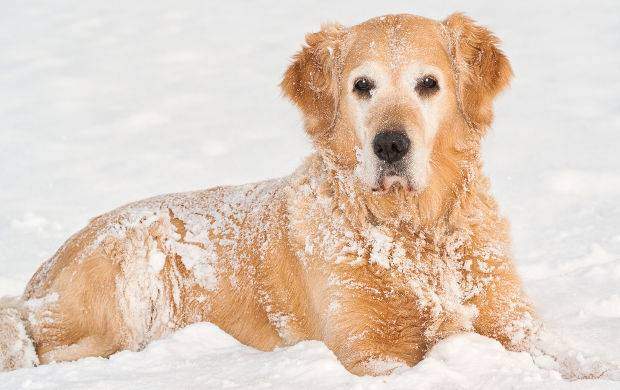
Photo Credit: © Depositphotos.com / pitrs10
Just like people, dogs can experience frostbite and pain from staying out in the cold too long. Pay attention to what your dogs are telling you and bring them in if they show any of the following signs.
- Whining
- Limping
- Anxiety
- Lethargy
- Shivering
What to do When You Just Can’t Go Outside
Even if you love winter, there will sometimes be those days – where it’s just too cold, windy, or snowy to get out for more than a bathroom break.
The problem with these scenarios is your dogs still need to exercise their bodies and minds or everyone will go crazy. Here are a few ideas for making indoor time fun with you dogs.
Training Exercises
Working on commands or teaching your dog a new skill is a great way to engage them and tire them out.
Ask your dog to “follow me” – walk all around your house, rewarding your dog for staying with you. You can even turn it into an obstacle course – up the stairs, around the table, into the shower.
Your dogs will love trying to figure out what you’re going to do next.
Hide-and-Seek
Ask your dog to sit and stay, then take a favorite toy and hide it somewhere in the house. When you release your dog, he’ll have to go and find the toy.
Most dogs love using their noses to track their favorite scents. This one could keep your dog busy for a good time.
Games and Puzzles
Keep a stash of indoor toys that only come out when your dog can’t go outside, so it feels new and exciting to be granted them.
Look for brain teasers and puzzles that will engage your dog and keep them entertained. Many of these toys will offer up a treat if your dog can solve the puzzle or figure out the trick.
Play Fetch
Provided your home is big enough, fetch is a great way to tire out your pup indoors.
Sit at the end of a long hallway and toss your dog’s favorite ball. Reward your dog for bringing it back, and offer bonus points if he can catch the ball before it hits the ground.
VIDEO: Winter Care Tips for Pets
In this video, Dr. Sarah has some great tips covering outdoor safety for pets during winter. She demonstrates just how easy it can be to keep your pets safe throughout a chilly winter:
Conclusion
Provided you take a few extra precautions, winter can be a great time to get outside and explore with your dog.
Follow the above tips combined with a bit of common sense, and you’ll be well on your way to a fabulous winter with your favorite companion.

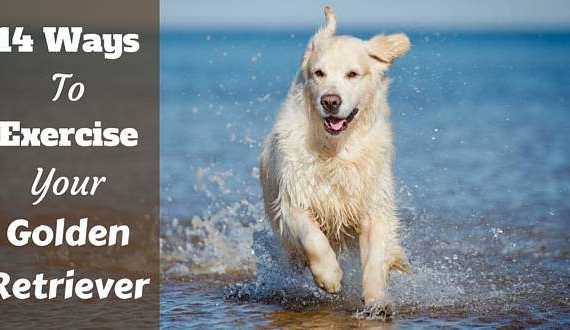
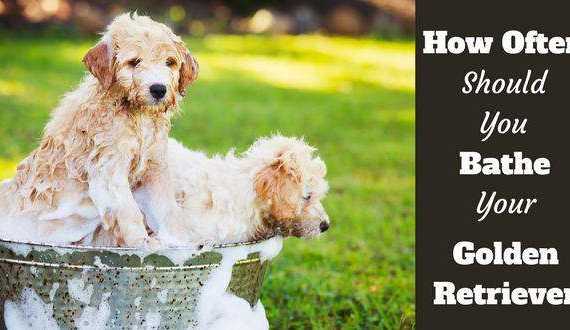
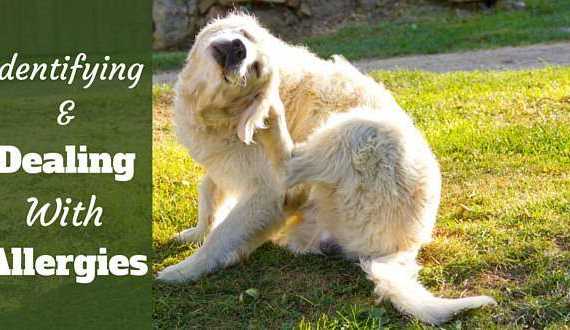
2 Comments
Bostep
“Don’t leave your dog alone in the car during the winter.” Can you be a little more informative on this. I have a 2012 Chevy Malibu and a 4 Year old Golden retriever. 2 nights ago I was running errands with my dog with me because one of the errands was to get her nails clipped. 1st destination: It was -2 degrees but I was waiting for a friend to arrive so we could walk in together. I Sat with my dog for roughly 20 to 25 mins without my engine running because my car was still warm from when I arrived. When I went in to the store I turned my engine on and cracked a window. But would you have a time frame for each different type of breed of dog. I feel saying “Don’t leave your dog alone in the car during the winter.” is just vague and causes people to become arrogant uneducated pet advocates. 🙂
Wendy
Hi Boostep, It’s impossible to give a time frame, as different cars, different dogs, different outside temps all affect things, it would be too tall a task to research and go into such detail. But it’s a simple case of common sense really. If it’s EXTREMELY cold, the inside of a car can amplify this. Leaving a dog alone for hours inside a sub-zero temp car is obviously not a good thing. However, if you drive somewhere with the heating on, and park and leave your dog in the car while you run an errand for 25 mins as you describe, chances are the car will still be relatively warm when you get back and it’s not an issue.